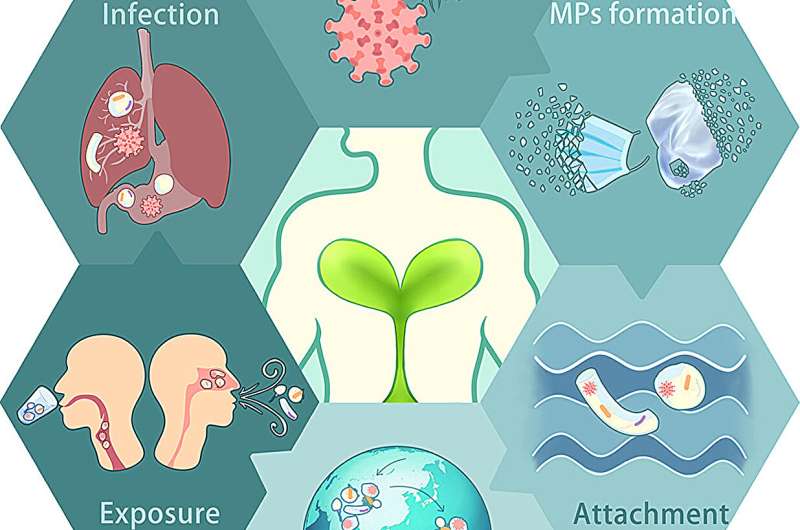
Credit: Eco-Environment & Health (2023). DOI: 10.1016/j.eehl.2023.07.004
Microplastics, which are minute plastic particles under 5mm in size, are becoming ever more ubiquitous in marine and freshwater ecosystems around the globe. These particles, derived from primary and secondary sources, such as industrial raw material nurdles and the degradation of larger plastic items, have escalated into a major environmental issue.
In aquatic settings, these microplastics take on the role of carriers for a range of pathogens, encompassing bacteria, viruses, and other microorganisms. This dynamic presents a considerable hazard, with the potential to cause infections in both marine life and humans.
A new study, featured in the journal Eco-Environment & Health, reveals the hidden dangers associated with pathogen-laden microplastics in aquatic environments, underscoring an increasing concern for public health.
The research delves into how microplastics act as conduits for pathogens in various aquatic environments. It thoroughly investigates the factors influencing the adherence of pathogens to microplastics, their survival, and the probability of these pathogens being transmitted to humans via different routes of exposure.
This investigation is instrumental in shaping both public health policies and environmental strategies. It emphasizes the urgent need for intensified monitoring of microplastic contamination and calls for expanded research into the role of microplastics in pathogen transmission, along with the health risks that ensue.
Huan Zhong, the lead researcher, stresses the vital importance of comprehending the role of microplastics in the dissemination of pathogens. He points out the significant consequences this has for both the environment and human health.
The study brings to light the overlooked health hazards posed by pathogens associated with microplastics in aquatic environments. It strongly advocates for immediate and decisive action to protect public health and maintain the integrity of the environment. Additionally, the research underscores the necessity for multidisciplinary research efforts to unravel the intricate interactions between microplastic-associated pathogens and to devise effective strategies for their mitigation.
More information:
Huan Zhong et al, The hidden risk of microplastic-associated pathogens in aquatic environments, Eco-Environment & Health (2023). DOI: 10.1016/j.eehl.2023.07.004
Provided by
TranSpread
Citation:
Microplastic-associated pathogens in aquatic environments: A hidden health risk (2023, December 21)
retrieved 21 December 2023
from https://phys.org/news/2023-12-microplastic-associated-pathogens-aquatic-environments-hidden.html
This document is subject to copyright. Apart from any fair dealing for the purpose of private study or research, no
part may be reproduced without the written permission. The content is provided for information purposes only.
>>> Read full article>>>
Copyright for syndicated content belongs to the linked Source : Phys.org – https://phys.org/news/2023-12-microplastic-associated-pathogens-aquatic-environments-hidden.html































